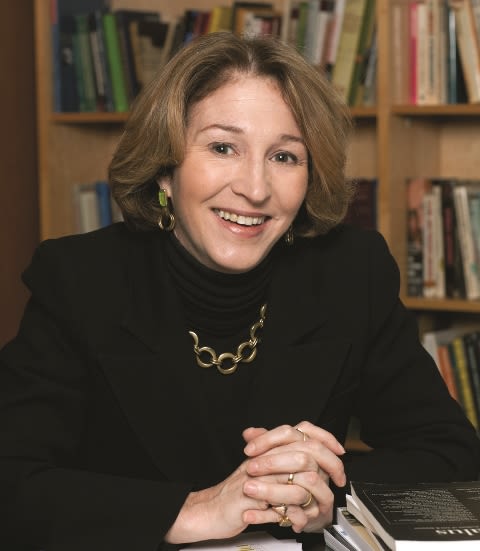Women and the Workplace
Anne-Marie Slaughter makes her case for balance.
By Megan McDonald

Dr. Anne-Marie Slaughter catapulted to the forefront of dinner-table conversations everywhere last summer thanks to her controversial Atlantic article, “Why Women Still Can’t Have It All.” The former director of policy planning for the U.S. State Department, Slaughter was inspired to write the piece based on the reactions of her peers after she left Washington to spend more time at home with her husband and two sons.
We interviewed Slaughter, who teaches politics and international affairs at Princeton University and is writing a new book due out in 2014, before she talked about work-life balance at the Women’s Resource Center of Sarasota County’s recent Renaissance luncheon.
Did you expect such a tsunami of responses to The Atlantic article?
No. I did expect it to have an impact—I wouldn’t have written it otherwise. But I’ve never seen anything like it, and it continues!
How did you feel while you were writing the piece?
I write all the time, but nothing that hit this close to home. The hardest part to write was that I wanted to go home. It wasn’t just that I felt my kids ought to have me at home during this period of their lives; it was that I didn’t want to miss them. Let me be clear, though: Even though I’m at home, I’m still working full-time and I’m on the road several days a week.
What did you want people to do after they finished reading it?
Ideally people would say, “We need another wave of the feminist revolution—our work is not done.” But the responses have given me hope. I think we are heading for a work/family resolution, and it’s happening among the younger men of this generation as well as women.
[The responses are] also part of a much bigger shift toward saner living. There’s having work be a healthy and important part of your life and then there’s having work consume you, and that’s not good for anyone—not you, not your children, not our society.
There was a clear generation gap in the responses you received. Is the divide still as sharp?
Plenty of boomer women have written me to say that yes, they absolutely agree with what I’ve said, but they are [often] the women for whom the balance stopped working. Other women have written to say that they are making it work, and not to set [women] back by saying [that what they’re doing] isn’t working.
The reaction among young women and men has been overwhelmingly positive. That’s not to say that they agree [with the article] entirely, but they’re the ones who are saying, “I want more time with my kids than my parents had.”
When women try to perform a balancing act, what usually trips them up?
Often something happens—whether it’s the birth of a second child, a move, a husband losing his job, you losing your job, a sick child, a sick parent—that tips that balance, and then suddenly [the woman] just can’t make it work anymore.
Do other countries have more humane office environments than we do in the U.S.?
It’s not even remotely close. In Germany you get a year of maternity leave per child. In most European countries, the minimum is six months and it’s all paid, and those countries are increasingly providing incentives for husbands to take real time off, too—months, not just two weeks—so they can bond with their child and start sharing the caregiving. We are one of three countries in the world, and the only first-world country, that doesn’t have [mandatory] paid maternity leave.
What companies would you single out for other companies to emulate? For example, Google now gives new mothers five months of maternity leave with full pay, and men get seven weeks.
I think what’s striking about Google is that it encourages young fathers just as much as young mothers. There are also a growing number of law firms—the big ones, at least—that now have six-month maternity leaves.
In your article, you mention Michelle Obama as a role model. Who else?
I also mention Michèle Flournoy. She’d worked for three years as the undersecretary of defense but was going to spend more time at home with her children. Hillary Clinton is an amazing woman; so is Madeline Albright, who has three daughters and raised them divorced.
But the thing I want us to do is not just to see [a woman’s] measure of success as “she made it to CEO,” but rather as “she made it to CEO and she was able to be the kind of parent she wanted to be”—which may have included slowing down, stepping back, deferring a promotion.
What’s your advice for young women starting out in their careers?
They should read [Facebook C.O.O.] Sheryl Sandberg’s book, Lean In. What she’s saying is very valuable advice. And that’s also why I’m writing a book—to answer that question. I need to know more about what is working, what can work and what’s working in other countries to be able to offer advice to younger women.
What does your own schedule look like these days?
Working on these issues is now about 40 percent of my time. I am still working on foreign policy issues a great deal, but this has added a whole other set of activities and obligations to what was already a very full life. [Laughs.] Making time for my kids has not gotten any easier!